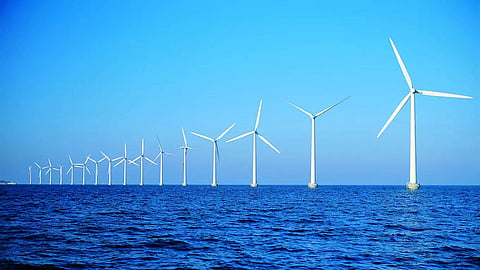Blowing in the air
The Danish declaration of twin targets of producing 30 per cent of all its energy needs from renewable energy sources by the end of 2020 and reducing carbon dioxide (CO2) emissions by 70 per cent by 2030 make Denmark the ideal partner for India in its effort to benefit this country’s electricity market.
On 5 June, the two countries signed a Memorandum of Understanding (MoU) for cooperation in energy.
The Indo-Danish MoU, finalised by India’s power ministry and the ministry for energy, utilities and climate of the Kingdom of Denmark envisages the development of a strong, deep and long-term cooperation between the two countries in the power sector on the basis of equality, reciprocity and mutual benefit.
While a Joint Working Group (JWG) will be established to work out specific details, the MoU provides for collaboration in a wide range of areas like offshore wind, long-term energy planning, forecasting, flexibility in the grid, consolidation of grid codes to integrate and operate efficiently variable generation options, flexibility in power purchase agreements, incentivisation of power plant flexibility and variability in renewable energy production. The JWG, to be co-chaired by officials at the level of Joint Secretary, will report to a Steering Committee, jointly chaired by the Secretary-level officer from each side.
One central element in Denmark’s climate action plan, of which that country’s parliament is negotiating, the first part, is the establishment of two ‘energy islands’ to be used as offshore wind energy hubs: one, the island of Bornholm and the other, an artificial island in the North Sea.
Two Danish pension funds and an energy company, will make the investment of up to €54 million needed to create the North Sea energy island. The consortium has found a sound, green business case in this: the project will add necessary momentum to the green transition, while creating value for pension savers. The multiple clusters of islands off the Indian coast are seen as possible places to duplicate this exercise without the expense of creating new ones.
Besides these energy islands, five other main tracks will lead to a Denmark with substantially lower CO2 emissions: green fuels and Power-to-X, which is a process which allows the creation of carbon neutral and renewable synthetic fuels by capturing CO2 from the air; energy efficiency in buildings; green heating by district heating or electric heat pumps; green energy and energy efficiency improvements in industry; and a climate-neutral waste sector.
Denmark has also embarked on five of the 19 new global partnerships to strengthen global climate efforts – one of which is with fashion industry giants to address is the CO2-heavy textile industry to find the best textile recycling solutions.
“Partnerships like these are simply so important and crucial to the future,” says Rasmus Prehn, Danish Minister of Development Cooperation.

